Rootbound Cannabis: Signs, Symptoms, And Solutions
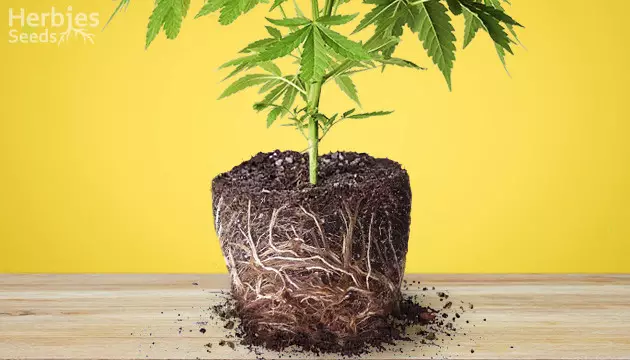
A healthy root system is essential for your plant’s growth, since that’s where it absorbs water and nutrients. Whenever you grow indoors, your plant’s roots won’t be able to grow as freely as in the great outdoors. It’s your job to make sure your cannabis plants always have the right amount of space both above and below the soil. Your plants becoming rootbound is a danger you can face if close enough attention isn’t paid to the size of your plant in relation to the container. Let’s break down some of the symptoms of a rootbound cannabis plant and what you can do if you ever find yourself in this situation.
Definition Of Rootbound Cannabis
So, what does it mean when a plant becomes rootbound? The main culprit is a container that’s too small for your plant. When the root system has no space left to grow, it starts to form in the shape of the container and becomes tangled. This is chiefly a problem for plants in pots and other containers – it doesn’t happen outdoors, where there’s much more free space in the ground for roots to grow freely.

Why You Want To Avoid Rootbound Plants
Okay, so the roots don’t have enough space. Why exactly is that bad? Well, it can lead to a whole bunch of growth issues for your cannabis plant, which ultimately means it won’t produce as many buds. Rootlock can cause problems like nutrient deficiency, drooping leaves, and not enough water absorption. To avoid a sad-looking plant, you need to be able to recognize the signs of rootlocked cannabis so you can tackle the problem effectively.
Signs Of Rootbound Cannabis
Aside from removing your marijuana plant from its pot, there are other, less invasive ways to decide if your plant is struggling. If the roots suffer, the plant visibly suffers. Here are some rootbound cannabis symptoms that you should be on the lookout for.
Soil Dries Out Too Quickly
The first thing you should look out for is the soil drying out really quickly, making it necessary for you to water your plant every day or two. If this is happening, it’s probably because your plant needs more water than the pot can hold and needs to be transplanted. Cannabis plants can be thirsty little ladies, and enough soil keeps them hydrated for longer!
Signs Of Nutrient Deficiency
To maintain its complex system, your cannabis plant needs the right amount of nutrients, soil, water, and space to be healthy and grow to maturity. Nutrient deficiency symptoms look like yellowing and spots, as well as crumbling or wilting leaves. If you’ve already done some troubleshooting and you know you’ve been using the correct amount of plant food, appropriate pH levels, and are not overwatering, you could be facing rootlock! When rootbound, cannabis roots lose their access to nutrients, no matter how much you feed the plant.
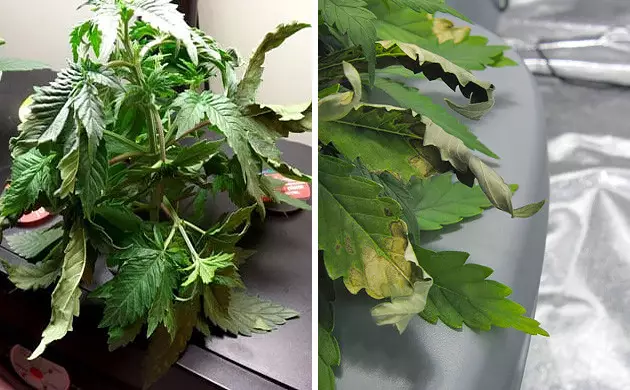
Nutrient Burn Without The Excessive Nutrients
The opposite of nutrient deficiency symptoms can be another sign of rootlock: if the cannabis plant looks like it is getting nutrient burn. Nutrient burn is damage to the plant caused by over-fertilization, and symptoms include bending at the tips of the leaves, and a slight yellowing or browning. These same symptoms can appear even when you’re only lightly feeding your plants, but there isn’t enough space or soil for the plant to grow properly.
Stunted Growth Or Small Buds
Overall stunted growth is a symptom of rootlocked cannabis, whether your leaves are coming in too slowly or the buds aren’t big enough. Let’s say your cannabis plant is already in the flowering stage. If you notice that the growth of the buds is slower than it should be or they simply look too small, rootlock could be the problem. Transplanting during the flowering stage is a very fragile affair, but the health of your plant could depend on it in this case.
Cannabis Plant Has Increased In Size While In The Same Container
Even if the size of your plant seems unaffected by the size of its container, that doesn’t mean it doesn’t need more room! If your plant has grown tall enough that it’s at risk of tipping over, that’s probably a sign that it has become rootbound and needs to be transplanted. A good rule of thumb is that it’s time to repot a young plant into its finishing container once it’s grown its first few sets of leaves.
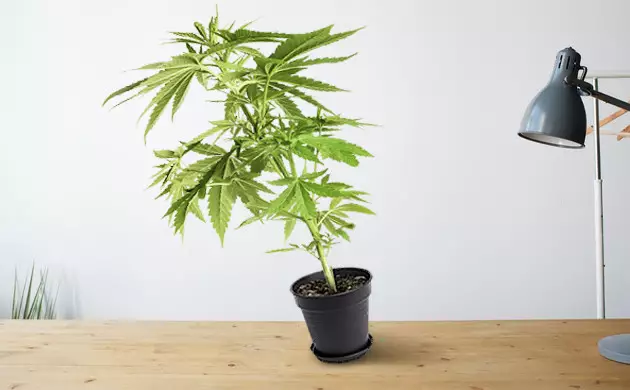
Overall Sick Appearance
Finally, if your plant just looks sick overall, there’s the possibility that becoming rootbound is the issue. Since the plant isn’t getting enough nutrients or water, it may begin to wilt or droop unexpectedly. Without a healthy root system, your plant’s overall appearance will become affected and your crop won’t grow properly!
How To Save A Rootbound Cannabis Plant
You see the signs, and it can only point to one thing: a rootbound cannabis plant. Don’t freak out – we can fix this! All you have to do is transplant your crop, taking care not to damage the leaves or the root system. Here’s a step-by-step to help you out.
Step 1: Water 1-2 Days Before Repotting
Water your cannabis plant a day or two before transplanting. Avoid watering on the day that you’re repotting, so it still slides out easily. Don’t overwater it, as you don’t want the plant to be so moist that the roots stick to the pot. However, some moisture in the soil will help everything stay together once you transplant your crop.
Step 2: Prepare A Larger Pot
Before you remove the plant, you need to prepare its new pot. Fill the pot up with your potting mix, leaving a few inches extra at the top. Don’t pack it too tightly, or your roots will have a hard time growing in. It’s crucial that you water the new soil so that it’s good and moist, otherwise you may run into problems with water absorption later, and your plant’s roots won’t be happy. Next, dig a hole about the size of your old container.
Step 3: Remove The Rootbound Cannabis Plant
Now it’s time to make the transplant. Grip your plant’s stalk right above the soil line, where it’s strongest and thickest. With the stem between your fingers, rest your hand on the soil so you can easily pull everything out at once. It usually shouldn’t be too hard, but if you run into some issues, you can give the container a few careful squeezes around the sides to loosen it up before giving it another pull.
Step 4: Carefully Loosen The Marijuana Root Ball
Once the plant is out of the old container, you’ll notice an intricate network of roots running in the shape of the container. Since the roots couldn’t grow any further out, they’ve formed a sort of marijuana root ball. Now that they’re about to be blessed with a new, larger pot, you can give those roots a little help. Very gently, use your fingers to untangle some of the compacted roots so they can reach out once more.
Step 5: Prune The Cannabis Roots (Optional)
If your cannabis plant turns out to be severely rootbound, it may not be possible to free up the roots with just your fingers. If this is the case, it’s time to do a little surgery and prune those roots to free them from the tangled mess. With a sharp knife in hand, carefully slice from top to bottom a few times around the root ball. Make sure to only cut thin roots – avoid all the thick ones! If you’re careful and evenly space out your cuts, that should be just what your plant needs to grow outward.
Step 6: Place The Weed Plant Into Its New Pot
Now that you’ve prepared your plant’s root system and the new pot, it’s time to move her into the new home. When you’re positioning your plant in the hole you dug out earlier, make sure it’s at about the same soil level as before, and don’t pack the soil too tightly. Now that she’s in a new home, you want your cannabis plant to grow freely without struggle. It might not be a bad idea to add a little root stimulant, too.
Stay Vigilant!
Ideally, you’ll never have to worry about this situation if you take proper precautions to prevent rootbound plants in the first place. All you really have to do is choose a big enough container from the start, and it won’t be an issue. If you’re the type who likes to start in small pots and replant, make sure to do so before your plant is obviously outgrowing its container. It’s better to make these major changes to the plant’s environment while it’s still young and not as fragile. You definitely don’t want to be transplanting in the flowering stage if you can avoid it! All in all, preventing cannabis from becoming rootbound is definitely easier than having to deal with this problem at any point of the plant’s life.
Herbies Head Shop expressly refuses to support the use, production, or supply of illegal substances. For more details read our Legal Disclaimer.

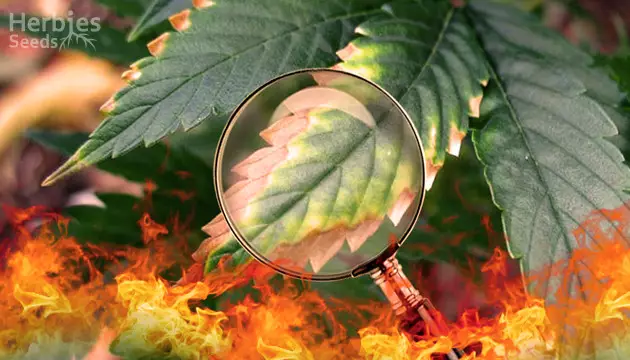
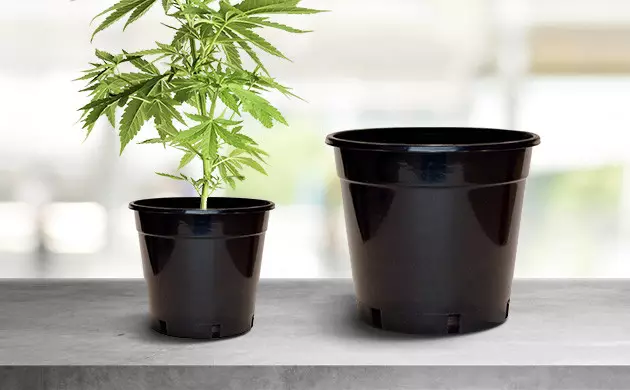
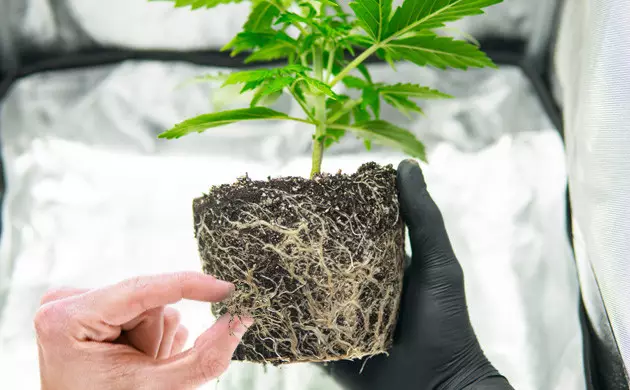
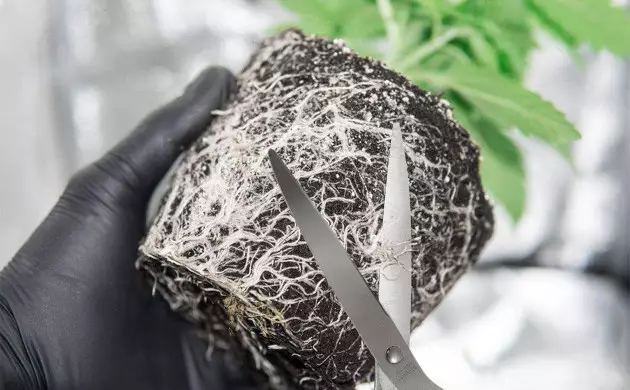
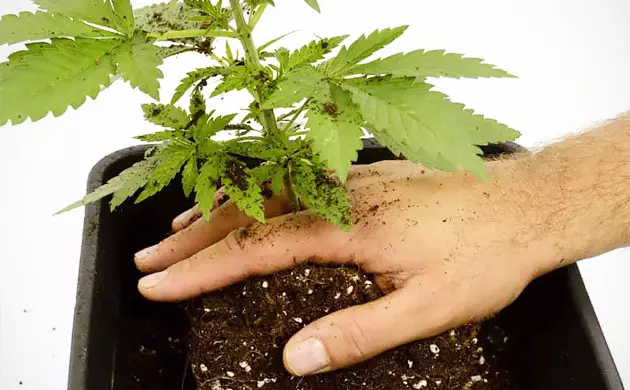
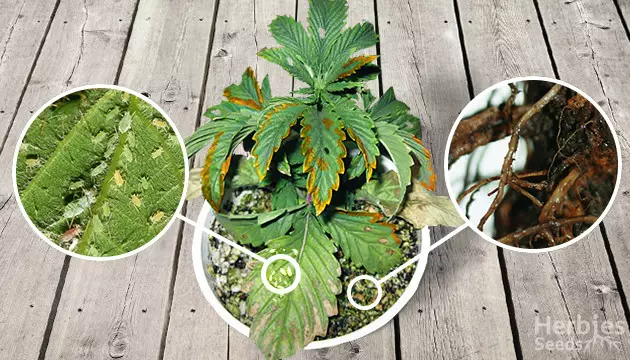

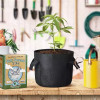
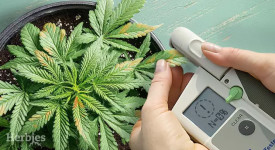



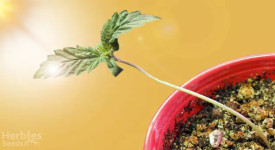
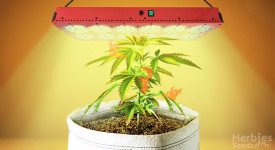
Thank you for leaving a comment for us!
Your feedback will be posted shortly after our moderator checks it.
Please note that we don’t publish reviews that: